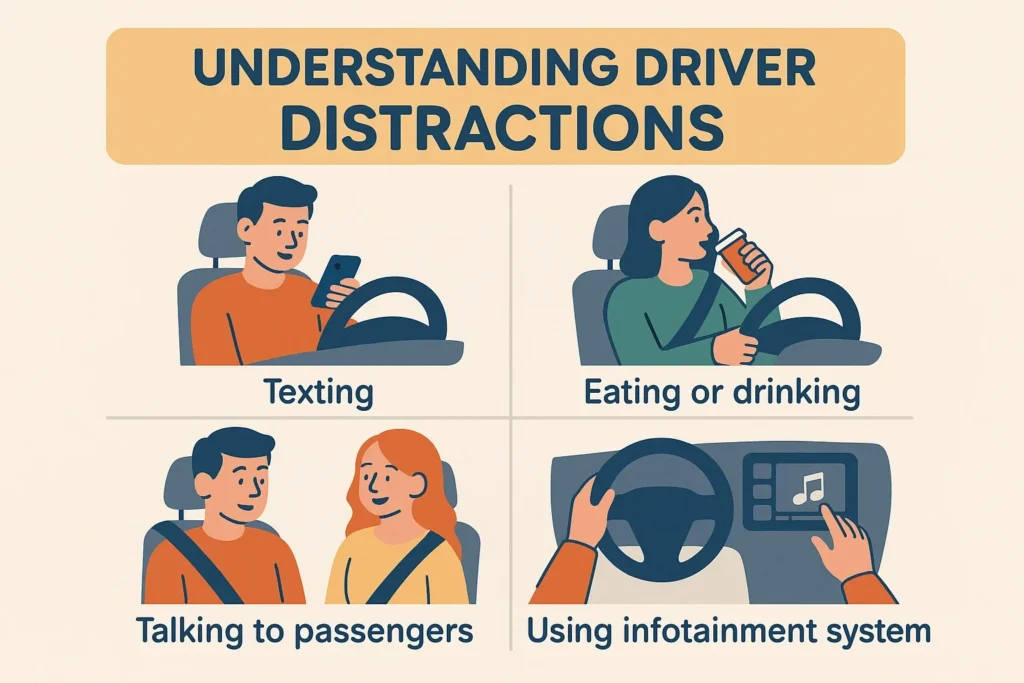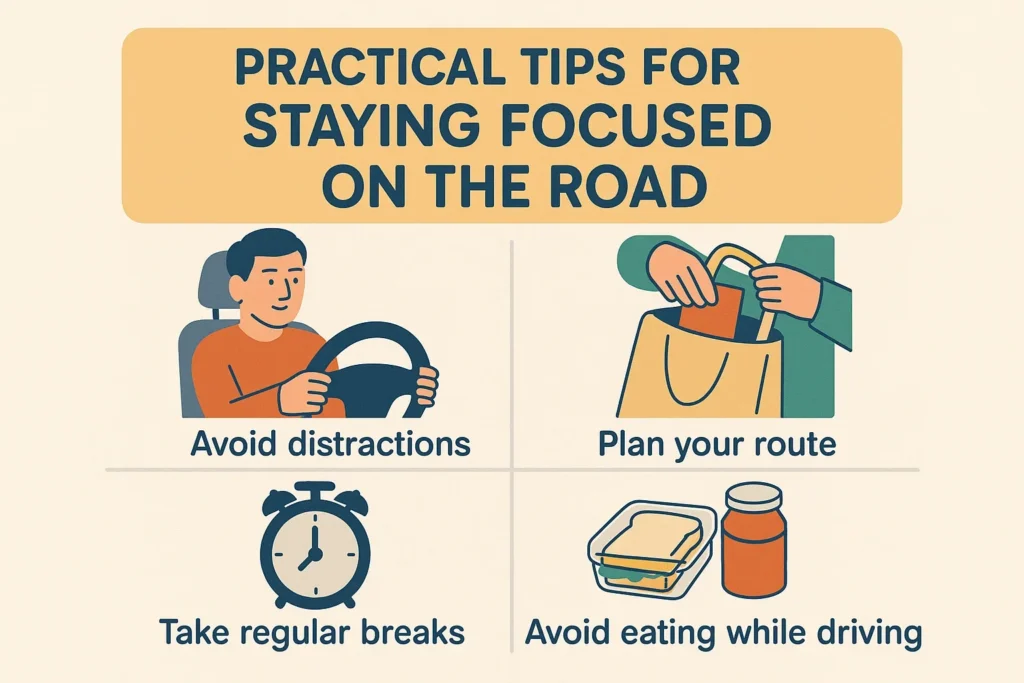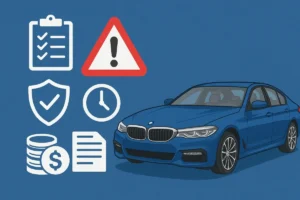Disclaimer: The information provided in this article is for educational purposes only and is not intended as professional advice. While every effort has been made to ensure accuracy, the author and publisher are not responsible for any accidents, injuries, or damages resulting from the use of this information. Always exercise caution, follow traffic laws, and consult a professional when necessary for specific driving concerns.
Every time we get behind the wheel, we take on a significant responsibility. Driving requires our full attention, yet it’s easy to let our minds wander or to be distracted by our phones, passengers, or even the events of our day. These moments of inattention, however brief, can have serious consequences. According to the NHTSA, distracted driving remains one of the leading causes of accidents in the United States, highlighting just how critical it is to stay alert behind the wheel. Understanding the importance of focus is the first and most essential step toward making our roads safer for everyone.
This guide will explore the common types of distractions that lead to accidents, highlight the groups most at risk, and offer practical strategies to help you maintain focus while driving. By adopting safer habits and encouraging others to do the same, we can all contribute to a culture of vigilance on the road. The goal isn’t just to avoid tickets; it’s about protecting lives—yours, your passengers’, and everyone else you share the road with.
Understanding Driver Distractions

A distraction is anything that pulls your attention away from driving. The National Highway Traffic Safety Administration (NHTSA) categorizes these into three main types:
- Visual Distractions: These occur when you take your eyes off the road. Examples include looking at a GPS, changing the radio station, or turning to talk to a passenger.
- Manual Distractions: This involves taking your hands off the steering wheel. Common culprits are eating, drinking, reaching for an item, or texting.
- Cognitive Distractions: This is when your mind is not focused on driving. Being lost in thought, feeling stressed or emotional, or engaging in a deep conversation can all pull your mental focus away from the road ahead.
Texting is hazardous because it combines all three types of distractions. It requires you to look at your phone (visual), type with your hands (manual), and think about the message (cognitive). This triple threat significantly increases the risk of a crash.
Who is Most at Risk?
While any driver can become distracted, certain groups are more vulnerable. Young drivers, particularly teenagers, are at higher risk due to their inexperience and a greater tendency to engage in risky behaviors, such as using their phones while driving. According to the CDC, drivers under the age of 20 have the highest proportion of distraction-related fatal crashes.
However, it’s not just young people. Commuters who spend long hours on the road may become complacent or fatigued, leading to lapses in attention. Commercial drivers, parents with young children in the car, and anyone using their vehicle for work-related tasks also face unique distractions that can compromise their safety.
Vulnerable road users, such as pedestrians, cyclists, and motorcyclists, bear the brunt of distracted driving accidents. They lack the physical protection of a vehicle, and a driver’s momentary lapse in attention can result in devastating injuries. Suppose you are a rider involved in a collision. In that case, seeking advice from a specialized motorcycle accident attorney in Salt Lake City can be crucial for navigating the legal aftermath and securing the support you need.
Practical Tips for Staying Focused on the Road

Cultivating safe driving habits is essential for staying alert. It’s about making conscious choices to minimize distractions before you even start the engine.
Prepare Before You Drive
A few minutes of preparation can make a world of difference.
- Set Your GPS: Program your destination before you start driving. If you need to make changes, pull over to a safe location first.
- Create a Playlist: Choose your music or podcast before you leave. Fiddling with the radio or your phone is a common and avoidable distraction.
- Secure Loose Items: Make sure any bags, water bottles, or other objects are secured so they won’t roll around and tempt you to reach for them.
- Finish Your Food and Drinks: Eat your meal or finish your coffee before you get on the road.
Put Your Phone Away
Your phone is one of the biggest distractions.
- Use “Do Not Disturb” Mode: Most smartphones have a driving mode that silences notifications and can send automatic replies to texts.
- Keep it Out of Reach: Place your phone in the glove compartment, a bag in the back seat, or somewhere you won’t be tempted to grab it.
Manage Your Mental State
Your mindset plays a significant role in your ability to stay focused on the road. If you’re feeling emotional, whether angry, upset, or overly stressed, you’re more likely to be cognitively distracted, which can impair your reaction time and decision-making. In such cases, it’s best to wait until you’ve calmed down before getting behind the wheel. Additionally, drowsy driving is just as dangerous as driving under the influence. Fatigue can slow your response time and impair your judgment, making it crucial to ensure you’re well-rested, especially before long trips. Prioritizing your mental and physical well-being can help you stay alert and reduce the risk of accidents.
Creating a Safer Driving Culture
Staying alert is a personal responsibility, but it’s also a community effort. We can influence those around us to adopt safer habits.
- Speak Up as a Passenger: If you’re in a car with a distracted driver, don’t be afraid to say something. Offer to help with navigation or to respond to a text for them.
- Set an Example: When others see you practicing safe driving habits, they are more likely to do the same. This is especially important for parents and guardians of young drivers.
Drive Alert, Arrive Alive
The journey to safer roads begins with each of us committing to staying alert every time we drive. By understanding the risks of distraction and taking proactive steps to minimize them, we can protect ourselves and those we share the road with. It’s not about being a perfect driver, but a mindful one. Choose to put your phone down, keep your eyes on the road, and focus on the task at hand. Your life, and the lives of others, may depend on it.












